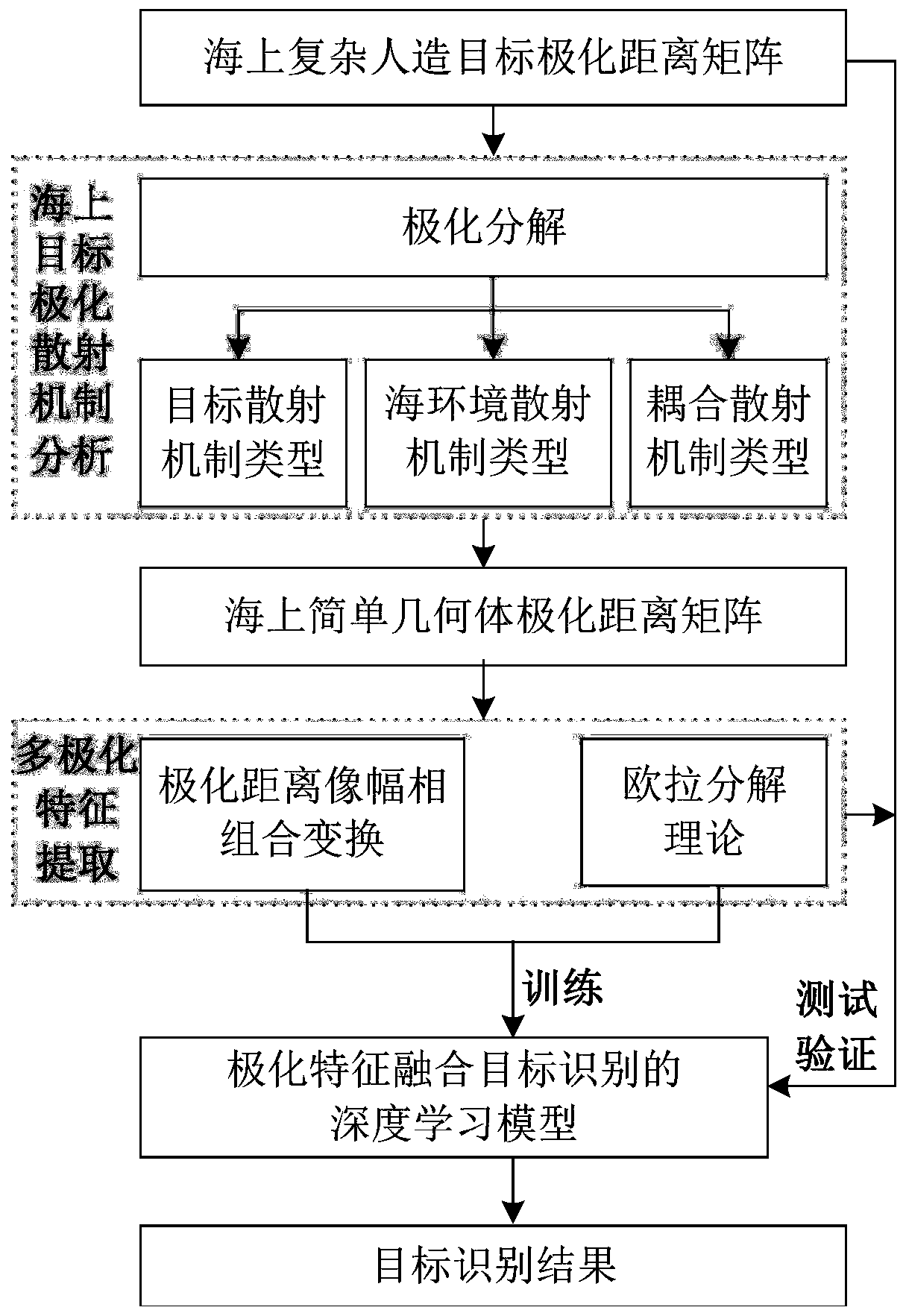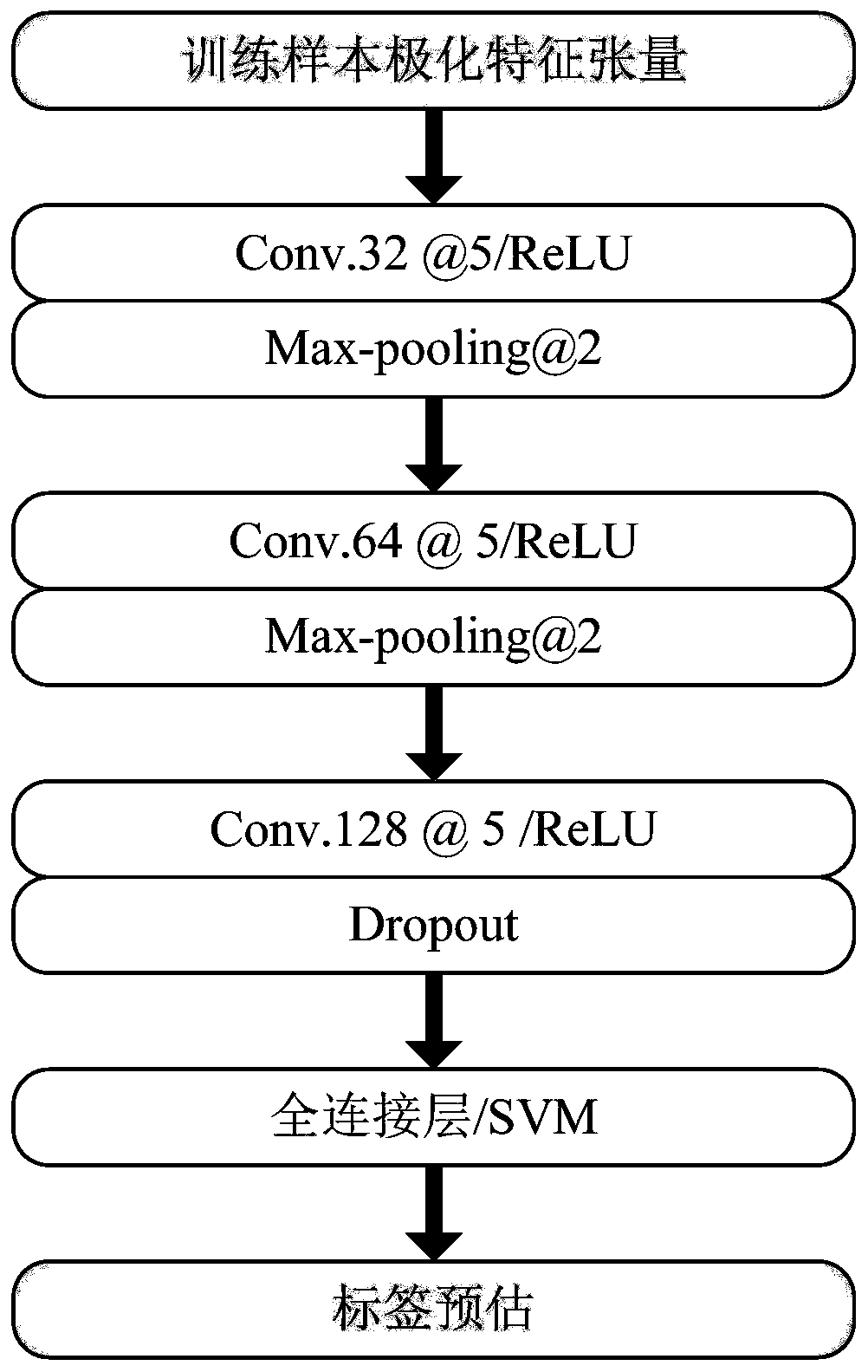Polarization Euler feature fusion deep learning-based marine target identification method
A feature fusion and deep learning technology, applied in character and pattern recognition, climate sustainability, instrumentation, etc., can solve the problem of ignoring the beneficial contributions of traditional polarized amplitude and phase characteristic parameters, limited application of recognition model expansion, and difficulty in applying to maritime targets. Identify problems such as overcoming information utilization, fully automatic processing, and eliminating adverse effects
- Summary
- Abstract
- Description
- Claims
- Application Information
AI Technical Summary
Problems solved by technology
Method used
Image
Examples
Embodiment Construction
[0058] The present invention will be further elaborated below by describing a preferred specific embodiment in detail in conjunction with the accompanying drawings.
[0059] Such as figure 1 As shown, it is a schematic flow chart of the sea target recognition method of the polarization Euler feature fusion deep learning of the present invention, and the method includes the following steps:
[0060] S1. Analysis of polarization scattering mechanism of complex man-made targets at sea.
[0061] The step S1 is specifically as follows: based on the polarization distance matrix of complex man-made targets at sea, the polarization decomposition method is used to analyze the types of ship targets, sea environment and the coupling scattering mechanism between targets and sea surface, and form a polarization that can describe the target at sea. The simple geometry scattering mechanism type for the scattering mechanism.
[0062] Wherein, the simple geometry scattering mechanism type in...
PUM
 Login to View More
Login to View More Abstract
Description
Claims
Application Information
 Login to View More
Login to View More - R&D
- Intellectual Property
- Life Sciences
- Materials
- Tech Scout
- Unparalleled Data Quality
- Higher Quality Content
- 60% Fewer Hallucinations
Browse by: Latest US Patents, China's latest patents, Technical Efficacy Thesaurus, Application Domain, Technology Topic, Popular Technical Reports.
© 2025 PatSnap. All rights reserved.Legal|Privacy policy|Modern Slavery Act Transparency Statement|Sitemap|About US| Contact US: help@patsnap.com



